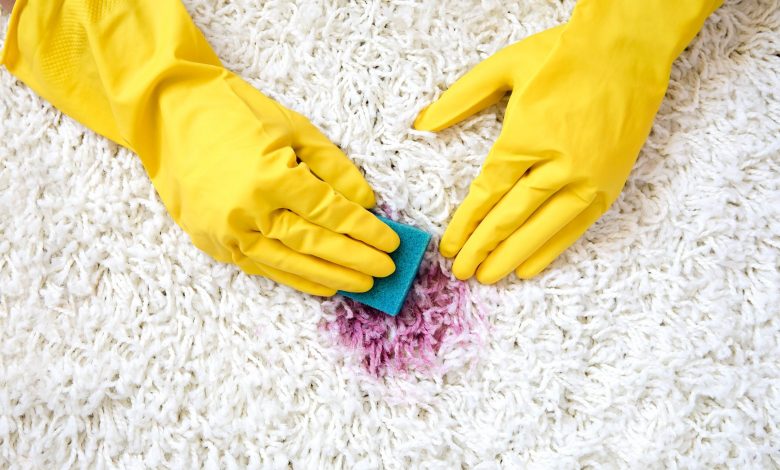Tough Stain And Residue Removal: What Are Your Options?

Knowing how to remove common stains and residues makes it easy to return an object or surface to a like-new state of cleanliness and also prevents deterioration and waste. Different substances will require different cleaning solutions. As a result, it can be tough to identify the best option. The following breakdown will help explain common types of cleaning substances and when they are most effectively used.
Abrasives
Abrasive cleaners are substances that contain small gritty particles, usually consisting of calcium or silica. They may be suspended in a paste, which can consist of chemicals that aid the cleaning process, but they may instead be loose in a powder or mineral form. Physical abrasives, like sandpaper, steel wool, and mesh pads are also included in this category.
Abrasive cleaning methods work by employing friction, which breaks up hardened, thickened, or stuck-on residue’s from a surface. Thicker greases, tarnish, dried paints and inks, hardened food particles, and similar stains can be removed with abrasives. As they are applied to and worked over the stain to create friction, they loosen the particles of the residue and break its contact with the surface. The loosened particles can then be rinsed away.
A residue comprised of smaller particles, like thickened grease or soap scum, may only require mild abrasives, while dried paint or inks may require a courser harsher abrasive. It’s very important to remember that abrasives can damage certain materials and rub away finishes. This can cause cosmetic issues and also create an uneven surface that enables dirt and contaminants to cling, which makes them harder to remove in the future. For this reason, coarser abrasives should only be reserved for especially tough stains on more resistant surfaces.
Solvents
Solvents are substances that dissolve stains and stuck-on particles. This is done passively by letting the solvent liquid break down residues either through soaking or immersion. Common examples of cleaning solvents are acetone, alcohol, kerosine, and turpentine. Solvents may be liquid-based cleaners, as in the case of paint thinners, or they may be incorporated into waxes and gels.
For mild cleaning purposes, solvents can be applied like most cleaning liquids, but since they will typically evaporate faster than water-based cleaning solutions, they are often employed through immersion in a closed container that prevents the solvent from evaporating before it can dissolve the residue. This will also ensure that solvent vapors do not cause various safety hazards. For example, parts washers use solvent solutions to clean residue like dried paint or varnish from tools by submerging them in a special chamber.
Solvents can be dangerous, so extra care should be paid when applying them. Immersion cleaning with solvents should only be completed with small volumes. Large volume cleaning with solvents is typically reserved for professionals who have access to appropriate cleaning equipment and will contact NexGen for your solvent recycling solutions needs, such as machinery like solvent recyclers and solvent distillation units. These resources are necessary because large volumes of contaminated solvents are considered hazardous waste. They will require special disposal practices or solvent recycling capabilities once the cleaning process is finished.
Even when spot cleaning using solvents, there is some risk of damage to materials like paint, polishes, finishes, certain plastics, rubber, wood, etc. For this reason, solvents should only be applied to objects and surfaces that are not vulnerable to solvent dissolution.
Acids and Alkaline Solutions
Acids and alkaline solutions are two different categories of cleaning solutions that are often applied in similar washing applications. Some stains will clear up easily when either type is applied, while others require a strictly acidic cleaner or a strictly alkaline cleaner.
Both types will work like solvents in the way they dissolve and break down stuck-on residues. They can be very mild, as in the case of citric acid or baking soda. They can also be quite caustic and harsh, as in the case of lye, which is alkaline, or hydrofluoric acid.
Acids and alkaline will cause a chemical reaction when combined. This is why cleaning solutions should never be mixed.
When removing tarnishes, rust, and other stains caused by oxidation or mineral deposits, mild acid-based cleaners can be effective. Acids are also useful for removing residues left behind by greasy or filmy substances, such as soap scum and hard water deposits.
Alkaline solutions can be used to loosen and dissolve grease in a similar way. While they are not as effective at removing tarnish and deposits, they are very useful for breaking down oils, grease, and stains caused by acidic substances like coffee or tea.
Strong alkalis can be quite powerful and can destroy many different bacteria and dissolve proteins, like hair clogs.
Strong acids can also be highly effective at breaking down solids and destroying microorganisms.
Whether using an acid-based cleaner or an alkaline-based cleaner, special caution should be taken. Even a mild cleaning agent, like vinegar, can irritate skin, eyes, and airways if not used with care.




